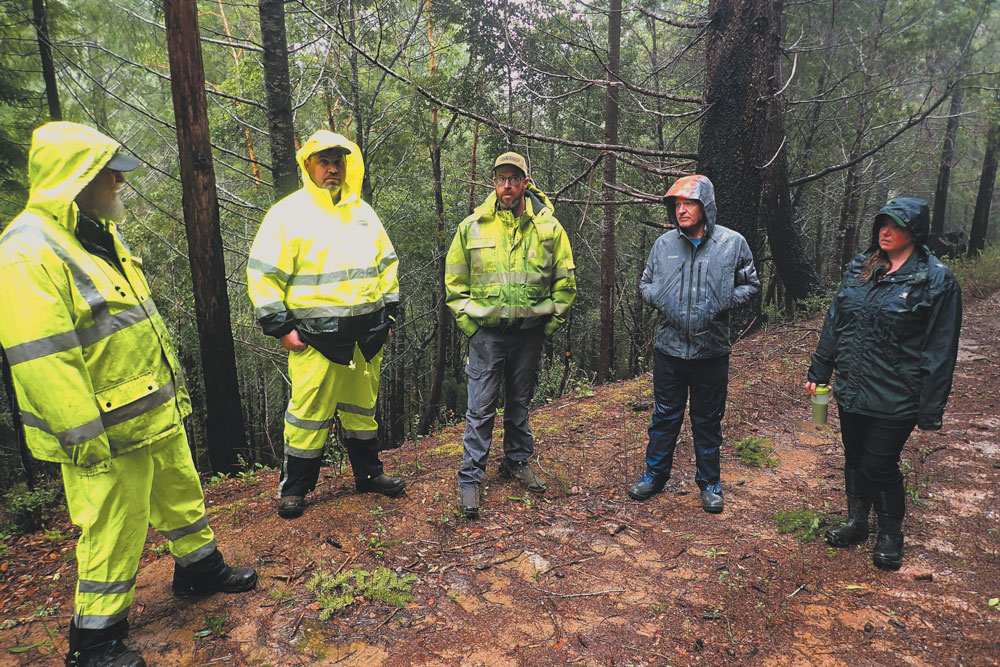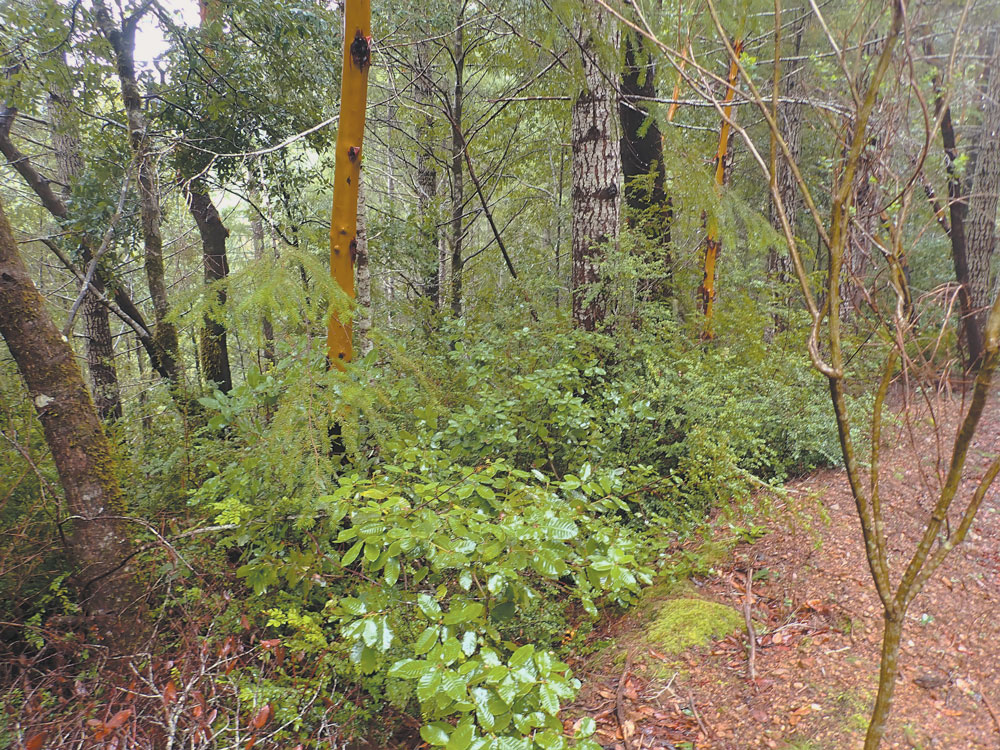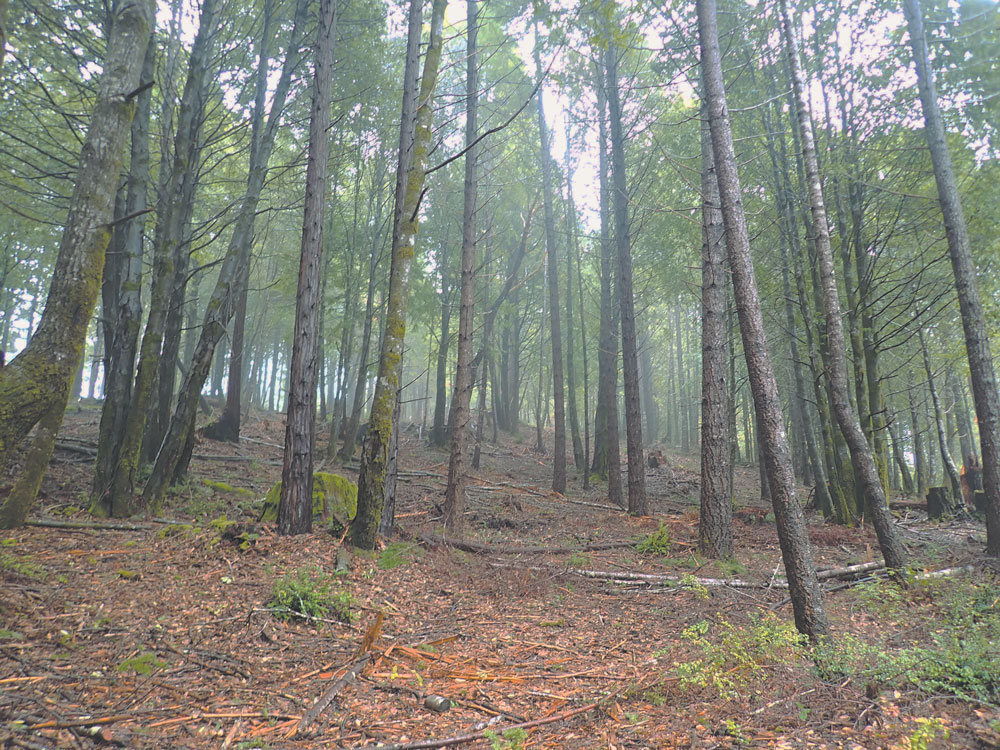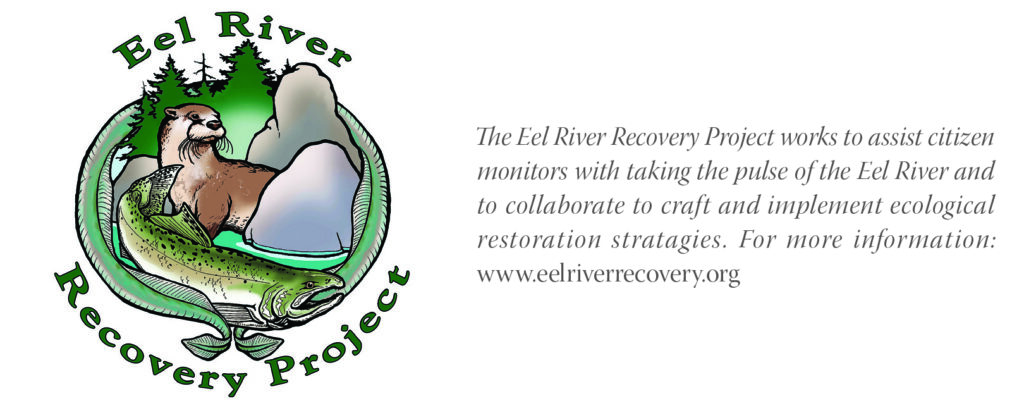Tenmile Creek Watershed Forest Health Grant

Planning for Action
By Pat Higgins, ERRP Managing Director
The Eel River Recovery Project (ERRP) is the recipient of a CAL FIRE Climate Change Initiative (CCI) grant awarded in August 2023 that runs through March 2028. More than 818 acres of forest land will be treated using thinning from below and prescribed fire. Acquisition of the grant and ERRP’s ability to perform are due to the local talent that coalesced, worked to shape the proposal, and formed the implementation team. The Cahto Tribe requested to be part of the project, and work to improve forest health on the Cahto Rancheria is included.
Before full-scale implementation can take place, permits will be obtained by August 2024 under the California Vegetation Treatment Program and pending approval of a team of consultants. In the short term, ERRP is pursuing a 50-acre Forest Fire Prevention Exemption Permit (FFPE) so that crews can start work before CEQA and NEPA permits are completed. Work on the ground will be accomplished in part by Elk Ridge Tree Service, which helped plan the forest health prescriptions. The firm contracts local workers exclusively and recently completed 250 acres of thinning on the Usal Forest for the Redwood Forest Foundation, Inc. (RFFI), which was part of another CCI grant acquired by the Mendocino County Resource Conservation District. Hybrid Indigenous Stewardship is a Willits-based firm that employs forest health prescriptions based on Traditional Ecological Knowledge and hires Cahto Tribal members. They will also be contracted for work after permits are acquired.

Implementation Plans
The overarching goal of the project is to restore the ecological health of the Tenmile Creek watershed by taking full advantage of forest health resources. Logs and woody material can be used to heal gullies in meadows and forested hillslopes, raising the water table and making restoration of native grasses and plants possible. Stream channels can be rebuilt using wood from forest health thinning to restore habitat complexity and the hydrology of creeks tractor-logged after WW II. In addition, medium-diameter poles could be used for log-pole home construction, with the Forest Reciprocity Group (FRG) exploring that potential. Smaller-diameter wood could make excellent furniture or be used for carving and fine art, an enterprise that the Northern Mendocino Ecosystem Recovery Alliance (NM ERA) is considering at Tan Oak Park.
CCI grants are funded by the Greenhouse Gas Reduction Fund using proceeds from the state of California’s cap-and-trade program. This means that funding for forest health is buffered from the state budget crisis, and more money will be available. ERRP feels fortunate to be breaking trails in the Tenmile Creek watershed, and we hope other groups continue to organize so we can acquire even more resources to fix our forests and watersheds.

Project Partners
ERRP contractors assisting with outreach, education, and oversight include Bell Springs Volunteer Fire Department Chief Will Emerson, Cheyenne Clarke, and Jessica Martinelli, all three of whom are also on the Board of the Northern Mendocino Ecosystem Recovery Alliance. Eric Lassotovich of FRG is contracted to help identify ways to integrate wood waste back into the soil in bioswales. Lower Tenmile Creek landowner and forest health practitioner Steve Brown is also under contract and will play a strategic role in coordinating use of prescribed fire. Scot Steinbring of Torchbearr (www.torchbearr.org) is the project Burn Boss and will put together the overarching plans for prescribed burns over the five-year project. The Mendocino County RCD is assisting with fiscal oversight and also quality assurance and quality control, checking forest health work in the field.

